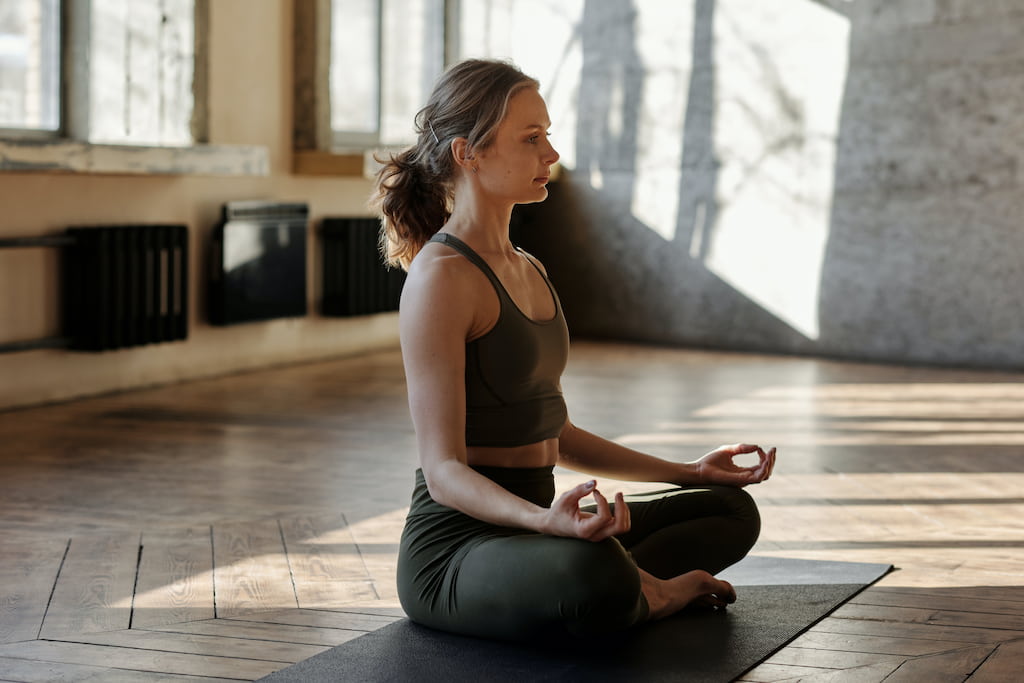Energy Boosting Breathing Exercises

Content
What would you say if I told you that instead of a cup of coffee, you can use some breathing exercises to feel awake and refreshed? In Yoga, all breathing techniques are tools used to regulate and increase our life force energy: the prana. That is why these techniques are called “pranayama” or the practice of breath control. Some pranayama practices help lower tension, calming our system and bringing us into a meditative state. There are some other pranayamas that increase your heart rate, boost your energy and mood, and wake you up. Get ready, because in this article I’ll tell you all about these highly beneficial exercises.

Let’s first discuss the effects of breathing techniques on both the body and mind. What comes to mind when you hear the words “boosting” or “energizing”? What kind of color or feeling do those words evoke for you? Initiating, directing, or leading energy is usually associated with the fire element in most philosophies. Think of nature: you have earth (matter, mass) and you have water (the binder). When you bring earth and water together to make a pot, let’s say, it won’t maintain its shape unless you fire it. Breathing techniques bring up the fire qualities within us, firing our metabolism, boosting our energy, helping our digestive system to work properly, and pumping up our immune system. Just like we may add spices to our food to liven up the flair palate, add a pinch of turmeric and just a little ginger to refresh your body!
Before we get to the how of these exercises, I have a few gentle reminders:
Your body and health come first!

If you have high blood pressure, heart issues, or any health concerns that might be triggered by rapid breathing or increased heart rate, please be careful. Some of the exercises listed here are very gentle, but listen to your body every step of the way and don’t push it too hard! Exercises are listed from gentle to most powerful so follow the order if you’re not sure what your limits are yet. If anything doesn’t feel right for your body, take a step back and try a gentler technique.
Preparing Your Stomach
Pranayama is best done on an empty stomach and with empty bowels if possible. However, if you are prone to dizziness when hungry, you can try these exercises a couple of hours after your meal. So, not too hungry, not too full.
Energy Boosting Breaths & Physical Activity
I strongly encourage you to make use of these techniques before you exercise, especially if you are going to engage in high effort cardio activities like running or power yoga. You might be surprised by how much they positively impact your performance and provide a smooth transition into peak effort.

Also, adding these techniques to your morning routine would be a great idea, particularly if you’re wanting clarity of mind and focus before you start working.
So, let’s start with the Crocodile Breath technique!
Crocodile Breath
The Crocodile Breath technique gets its name because it requires you to be in a position that resembles a crocodile! The main idea here is to teach our body to use our diaphragm muscles more, relaxing the shoulders as we breathe. This helps to increase your breathing capacity and aids in easing muscle tension, particularly useful before a training.
- Lie on your stomach with your ribs touching the floor.
- Put your one fist on top of the other and rest your forehead on the upper fist.
- Relax your shoulders, releasing them toward the ground.
- Try not to inhale into the upper part of your chest to avoid elevating your body away from the floor through the expansion of your ribs.
- Instead, inhale through the nose into your belly in order to expand your lower torso on all sides. Your stomach, lower back, and side abdominals should expand.
- Hold the breath for one to two seconds.
- Breathe out through the nose trying not to strain your body.
- After you have an understanding of the movement, continue this exercise for a couple of minutes.
- There is no specific requirement as to the duration of the breaths for this exercise, but try to maintain your normal flow with equal counts for both your inhales and exhales.
Lion’s Breath
Lion’s Breath is a basic yet powerful breathing technique and position, with a warming effect. If you’ve seen a lion’s face in a documentary or movie, you know that they open their jaws wide to let out a roar or a deep yawn. We will practice the same movement during this breathing technique. You will exhale with a “ha” sound as though you are trying to fog a glass or warm your hands in the cold. You can try exhaling like this before actually starting the exercise. When you exhale deeply, mouth agape, it is often warmer than usual.
- In a kneeling position, sit back on your feet, spreading your knees wide with your big toes touching slightly underneath you.
- First, breathe normally for a couple of breaths to find your usual rhythm.
- Then, place your palms on your knees, splaying your fingers wide.
- Roll your shoulders back and down away from your ears, maintaining this position for the duration of the exercise.
- Your spine should be long as you lean slightly forward with a relaxed yet active back.
- Inhale deeply through the nose and begin exhaling from the mouth slowly, making the “ha” sound. Try emptying all air in the lungs by using your ribs and core muscles to push the breath out.
- Be careful not to strain or collapse your shoulders.
- Repeat steps #1-7 to understand the exhaling technique. Don’t feel silly opening your mouth as wide as you can. Nobody is watching you!
- After getting used to this pattern, you’re gonna add a couple of things to the exercise.
- On each exhale, stick out your tongue, lengthening the tip of it downward as you roll your gaze up between the eyebrows.
- As you inhale, allow your body to expand through a small backbend, arching your lower back and your neck while continuing to look upward. You can use your hands pressing firmly on your knees for support.
You can start with five repetitions of the full version and increase the frequency over time as you wish. Feel free to adjust the sitting position by bringing the knees together or by modifying it to a classic heel to heel cross-legged position.
Kapalabhati
Did you know that “kapalabhati” in Sanskrit actually means “skull shining breath”? Kabhalabhati is an intense practice and if you practice it long enough you may actually feel a little tingling sense building in your forehead, just as if your skull is shining. Don’t worry, I promise you won’t burst into flame! Having an empty stomach is especially important for kapalabhati and it is not recommended to practice during the first few days of a menstrual cycle.

- Sit in the with your hips on your heels, knees together or in a cross-legged position. Use cushions to help you sit tall if needed.
- Contracting your belly, exhale forcefully. Imagine squeezing a balloon and emptying all of the air inside of it. Do not inhale, instead release your belly, allowing the air to fill back in.
- This movement might be confusing if you haven’t tried it before, so practice it a couple of times to get used to the rhythm. Focus on exhaling quickly by sucking the belly in and do not focus on inhaling, rather letting it happen naturally as you release your belly.
- Once you’re comfortable, try this exercise about 30 times to start.
If 30 times feels good, you can take a rest and do one or two more sets. As you get more comfortable, you can speed up the rhythm or increase the number. After finishing all sets, close your eyes and observe your body and breath for a couple of minutes. You may realize that your breath has slowed down, maybe even to the point of stopping (kumbhaka). This sometimes happens because the body gets rid of excessive carbon dioxide and becomes saturated with oxygen, lessening the need to breathe for a couple of seconds.
Kaphalabhati is especially beneficial for gut health and when you’re feeling bloated or constipated.

Bhastrika
In some resources, Kaphalabhati & Bhastrika are used interchangeably. However, I will tell you how Bhastrika differs. It is a powerful technique that has more of a heating and boosting effect than Kaphalabhati. It is recommended that you try this technique before heavy physical activity and to help when you’re feeling sluggish. You’ll hold your arms aloft the entire exercise, which can accelerate your heart rate. The hard and perhaps slightly weird part of this exercise is making the wolf growling sound in the throat. Let’s get into the details.
- Sit in a cross-legged position and raise your arms gently in a “V” or “U” shape, relaxing your shoulders.
- Your arms should be gently yet actively reaching toward the sky, spreading your hands wide.
- Take a couple of regular breaths.
- Inhale fast and forcefully.
- Exhale fast and forcefully, bending your elbows down toward your hips and making your hands fists and lowering them in line with your shoulders.
- Inhale, sending your hands to the air and exhale, lowering the elbows and hands again.
- Find your rhythm and repeat this ten times.
After you get used to it, you can add the sound part. Try exhaling very forcefully and making a sound like growling or as though you were clearing your throat. You can increase the count or add more sets to your Bhastrika practice as you grow more comfortable. Be careful not to strain your body and try sitting up tall the whole time without stressing your neck.
Now you know a couple of powerful tools to boost your energy, your mood, and immune system. Don’t wait too long to give them a shot! We would love to hear your experience with these breathing exercises in the comments below!





